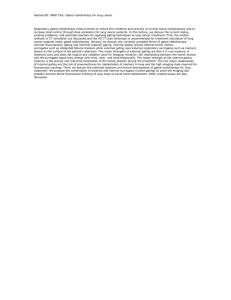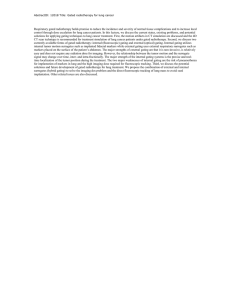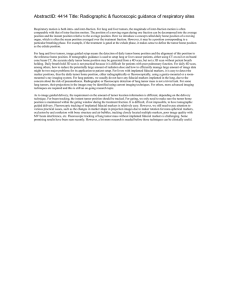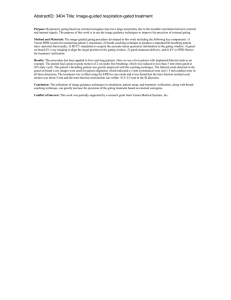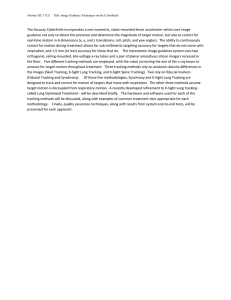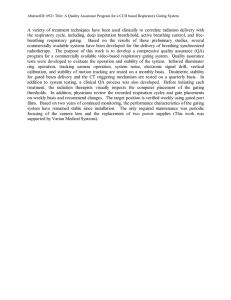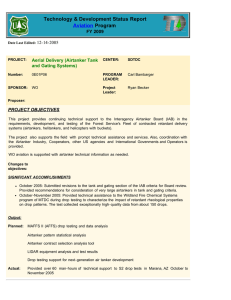AbstractID: 5036 Title: Correlation score based respiratory gating for lung... radiotherapy without implanted fiducial markers
advertisement
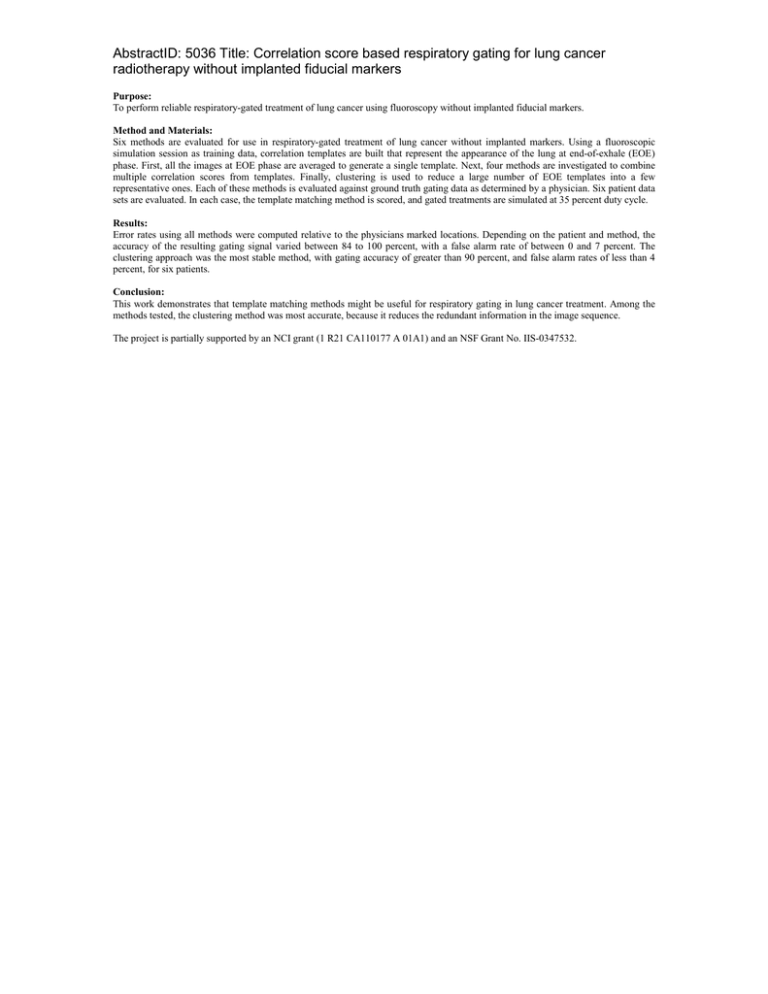
AbstractID: 5036 Title: Correlation score based respiratory gating for lung cancer radiotherapy without implanted fiducial markers Purpose: To perform reliable respiratory-gated treatment of lung cancer using fluoroscopy without implanted fiducial markers. Method and Materials: Six methods are evaluated for use in respiratory-gated treatment of lung cancer without implanted markers. Using a fluoroscopic simulation session as training data, correlation templates are built that represent the appearance of the lung at end-of-exhale (EOE) phase. First, all the images at EOE phase are averaged to generate a single template. Next, four methods are investigated to combine multiple correlation scores from templates. Finally, clustering is used to reduce a large number of EOE templates into a few representative ones. Each of these methods is evaluated against ground truth gating data as determined by a physician. Six patient data sets are evaluated. In each case, the template matching method is scored, and gated treatments are simulated at 35 percent duty cycle. Results: Error rates using all methods were computed relative to the physicians marked locations. Depending on the patient and method, the accuracy of the resulting gating signal varied between 84 to 100 percent, with a false alarm rate of between 0 and 7 percent. The clustering approach was the most stable method, with gating accuracy of greater than 90 percent, and false alarm rates of less than 4 percent, for six patients. Conclusion: This work demonstrates that template matching methods might be useful for respiratory gating in lung cancer treatment. Among the methods tested, the clustering method was most accurate, because it reduces the redundant information in the image sequence. The project is partially supported by an NCI grant (1 R21 CA110177 A 01A1) and an NSF Grant No. IIS-0347532.
